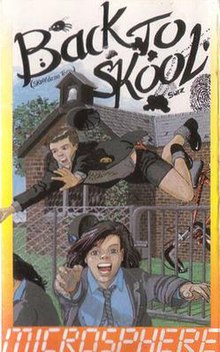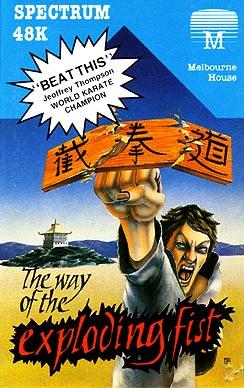
The Way of the Exploding Fist is a 1985 fighting game based on Japanese martial arts developed by Beam Software, by a team consisting of Gregg Barnett, Bruce Bayley, Neil Brennan and David Johnston. Originally developed on the Commodore 64 and published in May 1985 by Melbourne House, ports were made for Amstrad CPC, ZX Spectrum, BBC Micro, Acorn Electron and Commodore 16.

Operation Wolf is a light gun shooter arcade game developed by Taito and released in 1987. It was ported to many home systems.

Ghostbusters is a licensed game by Activision based on the film of the same name. It was designed by David Crane and released for several home computer platforms in 1984, and later for video game console systems, including the Atari 2600, Master System and Nintendo Entertainment System. The primary target was the Commodore 64 and the programmer for the initial version of the game was Adam Bellin. All versions of the game were released in the USA except for the Amstrad CPC and ZX Spectrum versions, which were released only in Europe, and the MSX version, which was released only in Europe, South America, and Japan.

Sinclair User was a magazine dedicated to the Sinclair Research range of home computers, most specifically the ZX Spectrum. Initially published by ECC Publications, and later EMAP, it was published in the UK between 1982 and 1993, and was the longest running Sinclair-based magazine. The magazine contained news, game reviews, previews, tips, help guides, columns, readers' letters, and cover-mounted game demos.

Skool Daze is an open world action-adventure game released by Microsphere in 1984 for the ZX Spectrum and ported to the Commodore 64 the following year. It was written by David Reidy, with graphics designed by Keith Warrington. The game was commercially and critically successful, and praised for its original concept. It has since been regarded as one of the pioneers of the sandbox game genre.

Edd the Duck is a puppet duck which appeared on the CBBC interstitial programme The Broom Cupboard alongside presenters Andy Crane and Andi Peters.
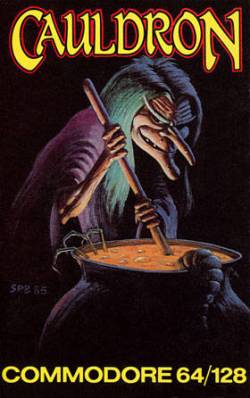
Cauldron is a video game developed and published by British developer Palace Software in 1985 for the ZX Spectrum, Commodore 64, and Amstrad CPC home computers. It contains both platform game and horizontally scrolling shooter sections. Players control a witch who aims to become the "Witch Queen" by defeating an enemy called the "Pumpking".

Kikstart 2 is a motorcycle trials racing videogame released for the Amiga, Amstrad CPC, Commodore 64 and ZX Spectrum. It enjoyed more success than its predecessor, Kikstart. The game allowed 2-player simultaneous or 1-player, vs-computer play.
The ZX Spectrum's software library was very diverse. While the majority of the software produced for the system was video games, others included programming language implementations, Sinclair BASIC extensions, databases, word processors, spread sheets, drawing and painting tools, and 3D modelling tools.
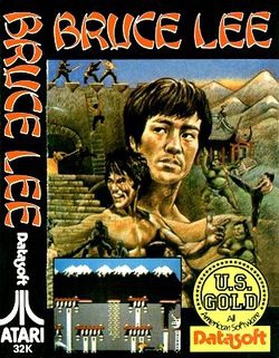
Bruce Lee is a platform game written by Ron J. Fortier for Atari 8-bit computers and published in 1984 by Datasoft. The graphics are by Kelly Day and music by John A. Fitzpatrick. The player takes the role of Bruce Lee, while a second player controls either Yamo or alternates with player one for control of Bruce Lee.
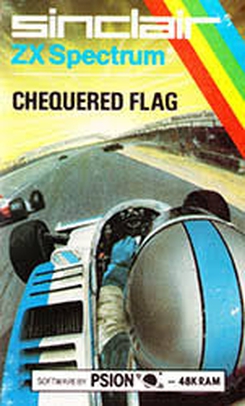
Chequered Flag is a racing video game developed by Psion Software and published by Sinclair Research in 1983. It was the first driving game published for the ZX Spectrum and one of the first computer car simulators.
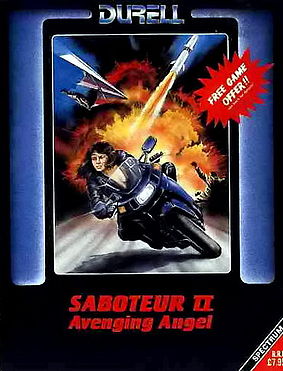
Saboteur II: Avenging Angel, also known as Saboteur 2, is an action-adventure game created by Clive Townsend and released by Durell Software in 1987 for the ZX Spectrum, Amstrad CPC, Commodore 64, and MS-DOS compatible operating systems. A sequel to 1985's Saboteur, the player controls a sister of Ninja from the first game on a mission to avenge his death. Saboteur II was one of the first action-adventure games with a female protagonist and was well received by critics.
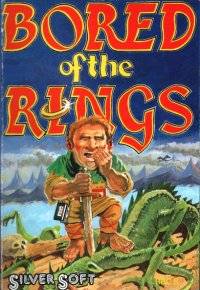
Bored of the Rings is a text adventure game released by Delta 4 in 1985 for several computer systems written using The Quill. It was also released by CRL Group. The game is inspired by, but not based on, the Bored of the Rings parody novel published by Harvard Lampoon. The earlier game The Hobbit is also parodied. It was followed by a prequel in the same spirit, The Boggit.

Frankenstein is a text adventure game released by CRL in 1987 for the Commodore 64, Amstrad CPC, and ZX Spectrum home computers. The game is based on the 1818 novel Frankenstein; or, The Modern Prometheus by Mary Shelley.
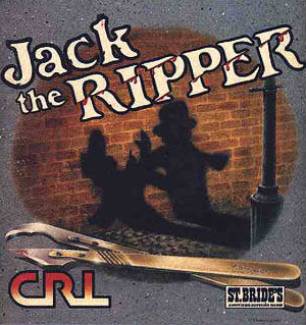
Jack the Ripper is a text adventure computer game designed by St. Bride's School and released by CRL in 1987 for the Commodore 64, Amstrad CPC and ZX Spectrum home computers. The game is based on the notorious "Jack the Ripper" murders in 1880s London.

Jack the Nipper is a video game by Gremlin Graphics released in 1986 for ZX Spectrum, Commodore 64, Amstrad CPC, and MSX. It was followed by a sequel, Jack the Nipper II: In Coconut Capers.
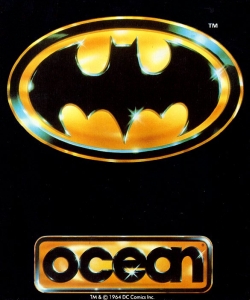
Batman is an action video game developed and published by Ocean Software based on the 1989 film of the same name. It was released on 11 September 1989 for the Commodore 64 and ZX Spectrum with Amiga, Amstrad CPC, Atari ST, MS-DOS and MSX versions following soon after.
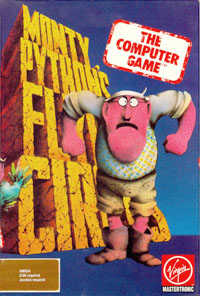
Monty Python's Flying Circus: The Computer Game is a 1990 scrolling shoot 'em up video game developed by Core Design. It was released by Virgin Games the Amiga, Commodore 64, Amstrad CPC, and the ZX Spectrum. It is loosely based on material and characters from the 1970s British comedy series Monty Python's Flying Circus, in particular the Gumby character.
Microsphere was a British software company formed in Muswell Hill, north London in 1982 by husband and wife team David and Helen Reidy, best known for several popular computer games in the mid 1980s.
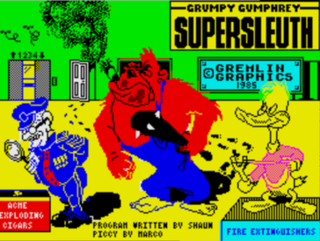
Grumpy Gumphrey Supersleuth, often known simply as Super Sleuth, is a computer game for the ZX Spectrum by Gremlin Graphics, a software developer based in Sheffield, United Kingdom. It is an action-adventure game: the player controls Grumpy, a store detective and general dogsbody working in a large department store. The game was developed by Shaun Hollingworth with loading-screen graphics by Marco Duroe.
